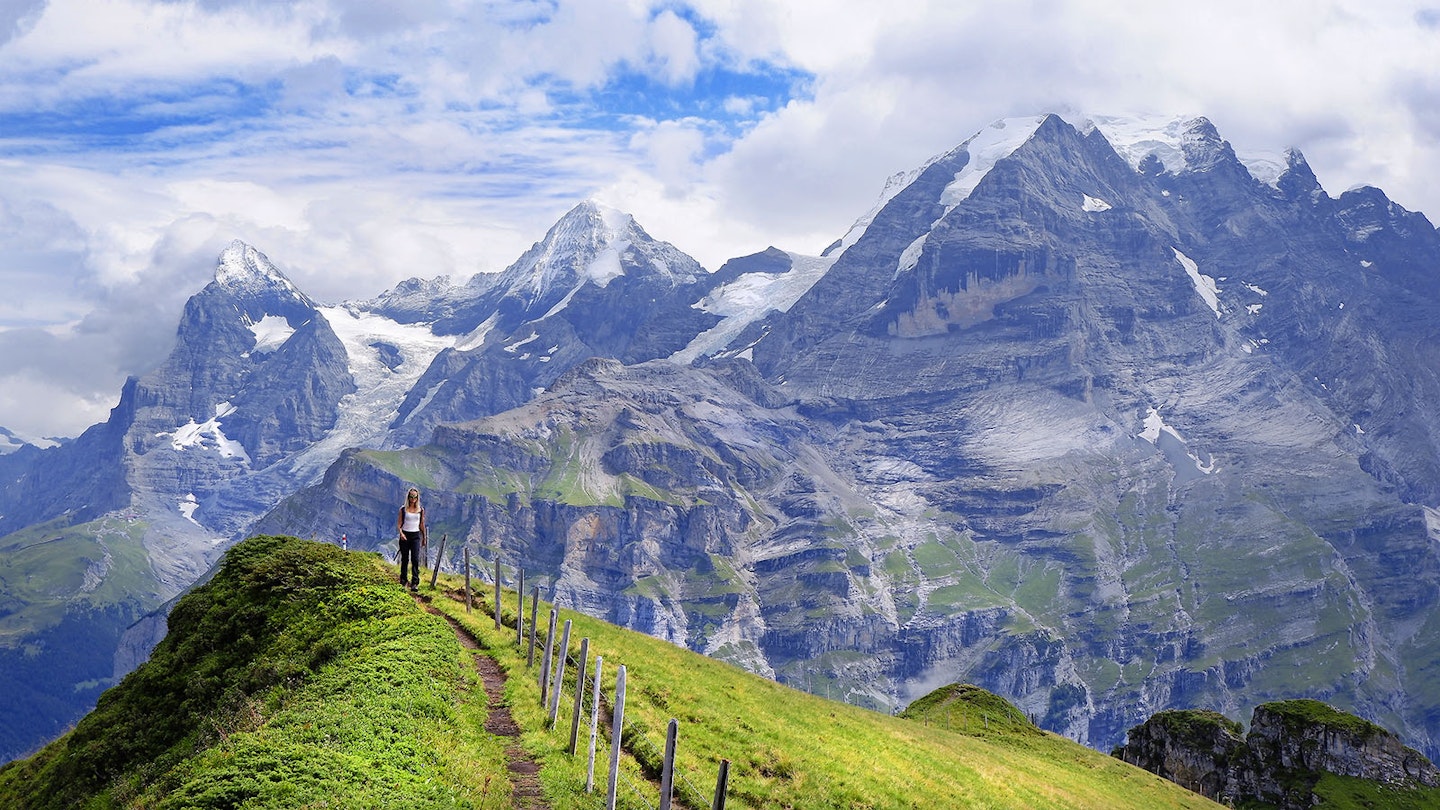What is it about Switzerland that makes the whole country, and everything in it, feel so effortlessly excellent? You may never have even been there, but I know you know what I’m talking about. The chocolate, the pen knives, the trains, the watches, the cuckoo clocks, the cheese, the bank accounts, the chalets, the topspin on Roger Federer’s backhand… and the mountains. Oh my word, those mountains.
Even by Alpine standards, Switzerland is a seriously special place. Say the word Matterhorn or Eiger to anyone with even a passing interest in big pointy pieces of rock and watch them start to wobble at the knees. The mountains here aren’t just famous, or iconic, they’re legendary.
That legendary status has been earned not just by their size and beauty, but by the weighty roles they’ve played in the history of mountaineering. The Matterhorn was an obsession of early Alpinists, with many a tragedy playing out on its sheer slopes before it was finally summited by Edward Whymper in a controversial and deadly 1885 ascent. The Eiger, though, is a different story altogether. It wasn’t so much the mountain itself that was the last great scalp of the Alps, but its almost freakishly difficult North Face, known locally as the Nordwand. Hulking above the village of Grindelwald, this isn’t just the biggest north face in the Alps, but also the most deadly. More than 60 people are known to have died on it, earning it the nickname ‘Murder Wall’. The mountain itself was first summited in 1858 but the Nordwand itself wasn’t scaled until 1938, and even now – 82 years later – remains one of the world’s most prized mountaineering ascents.
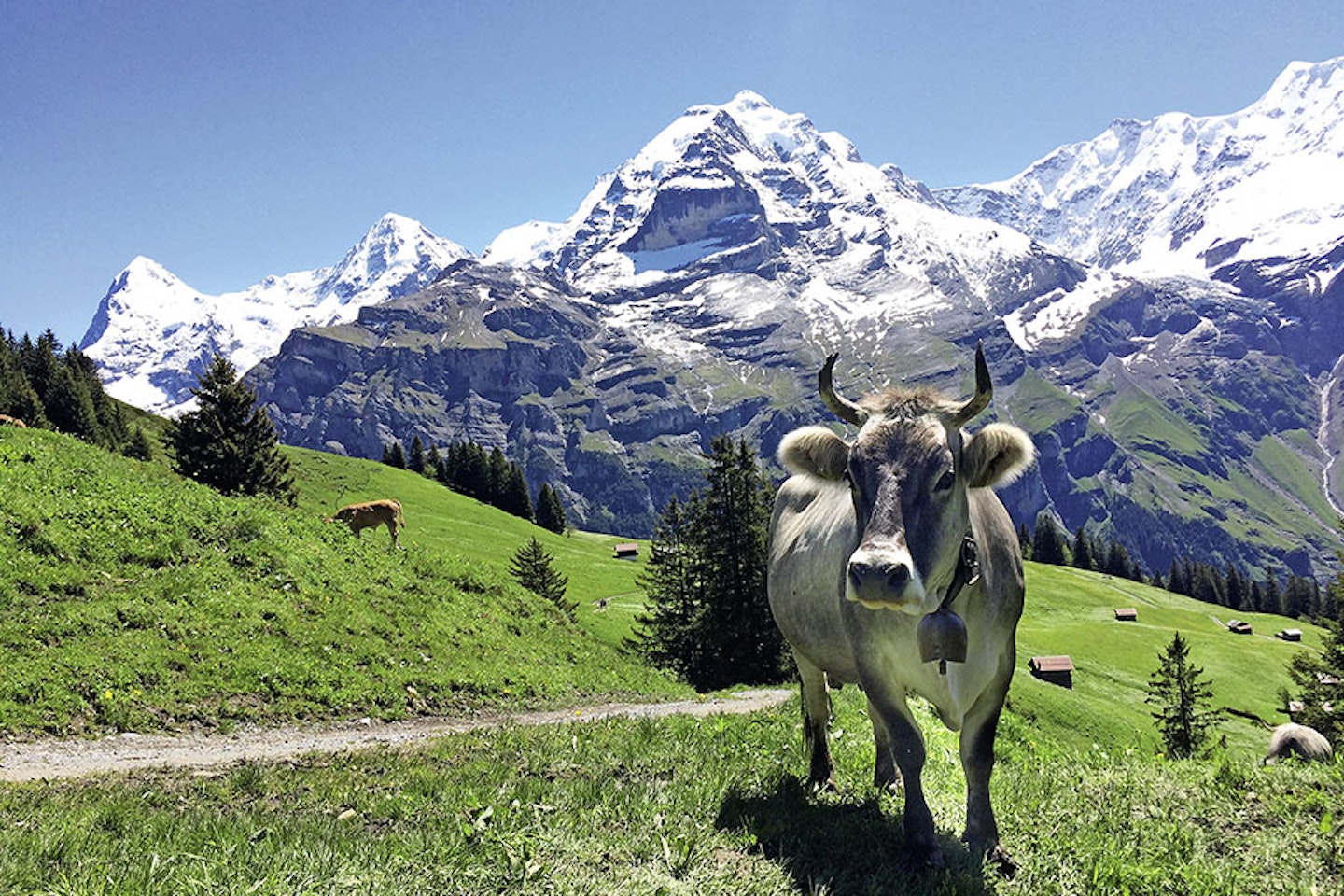
The Eiger has gnawed away at me for years. Ever since reading The White Spider, a classic piece of mountaineering literature by Heinrich Harrer, I’ve needed to see it with my own eyes. It took me almost 20 years from closing that book to finally putting that plan into action, and when the moment came it didn’t disappoint. Climbing steeply by cable car up a tree-tangled hillside from the village of Lauterbrunnen, there it was. Facing me down across the valley like a high school bully. Shorn of its winter coat by the blazing summer sun, the point of the Eiger’s summit, the clean lines of its edges, and the vastness of that inward-curving north wall were unmistakable. I’ve rarely been so excited by anything.
And here’s the best bit; I wasn’t just looking at the Eiger. To its right the Mönch and the Jungfrau, the two other mountainous icons of the Bernese Alps, drew simultaneous gasps of astonishment from the 50-or-so tourists packed into the cable car with me. We weren’t in Switzerland to climb these Alpine giants (I’m far too timid for that), we were here almost exclusively to stare at them in amazement for the next four days. Not from our hotel balcony, but from a series of hikes that would take us up to almost 3000m in altitude on trails no more challenging than you’d find in England’s Lake District fells.
We would stroll through aromatic pine forests, sneak beneath 1000ft waterfalls, eat home-made (and truly excellent) goulash soup in remote mountain refuges, visit a spectacular Alpine summit with its own revolving restaurant and James Bond museum (I promise I’m not making this up), and test our head for heights on the ladders and cables of the region’s recently installed via ferrata course.
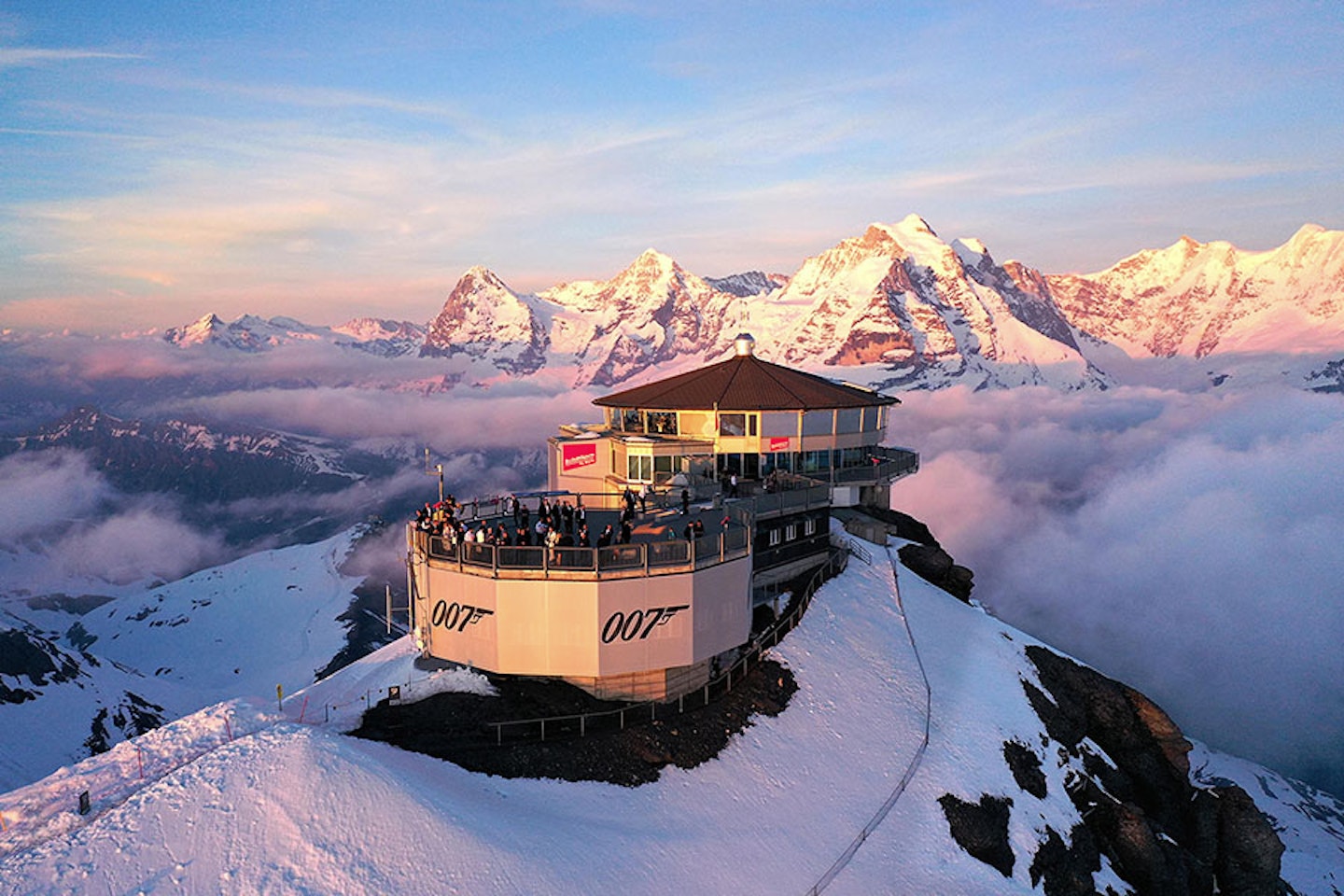
This trip was all about proving the Swiss Alps aren’t just for ski holidays in winter and big scary mountaineering expeditions in summer. And it was about opening our own eyes to the fact you can get high into this region on foot, face-to-face with some of the most famous mountains on this planet, with little more than a pair of lightweight boots, a waterproof jacket, a local trail map and an empty water bottle (just fill them up from the streams or fountains in the villages and valleys).
Our base for the trip was the immaculate and car-free mountain village of Mürren, easily accessible by train from Zürich, itself just a short hop from the UK by plane. The names of the places we hiked to aren’t important, but what we experienced on each walk definitely is. Every route started and finished right from our hotel door; leading past glacial meltwater streams that glowed turquoise beneath the late summer sun. We rambled across meadows choked with butterflies and alpine flowers, while chamois and ibex eyeballed us suspiciously from surrounding woodland. We didn’t see any of the eagles, wolves and lynx that are known to patrol the region, but it provided a tingle of excitement to know they were out there somewhere. Probably watching our every footstep.
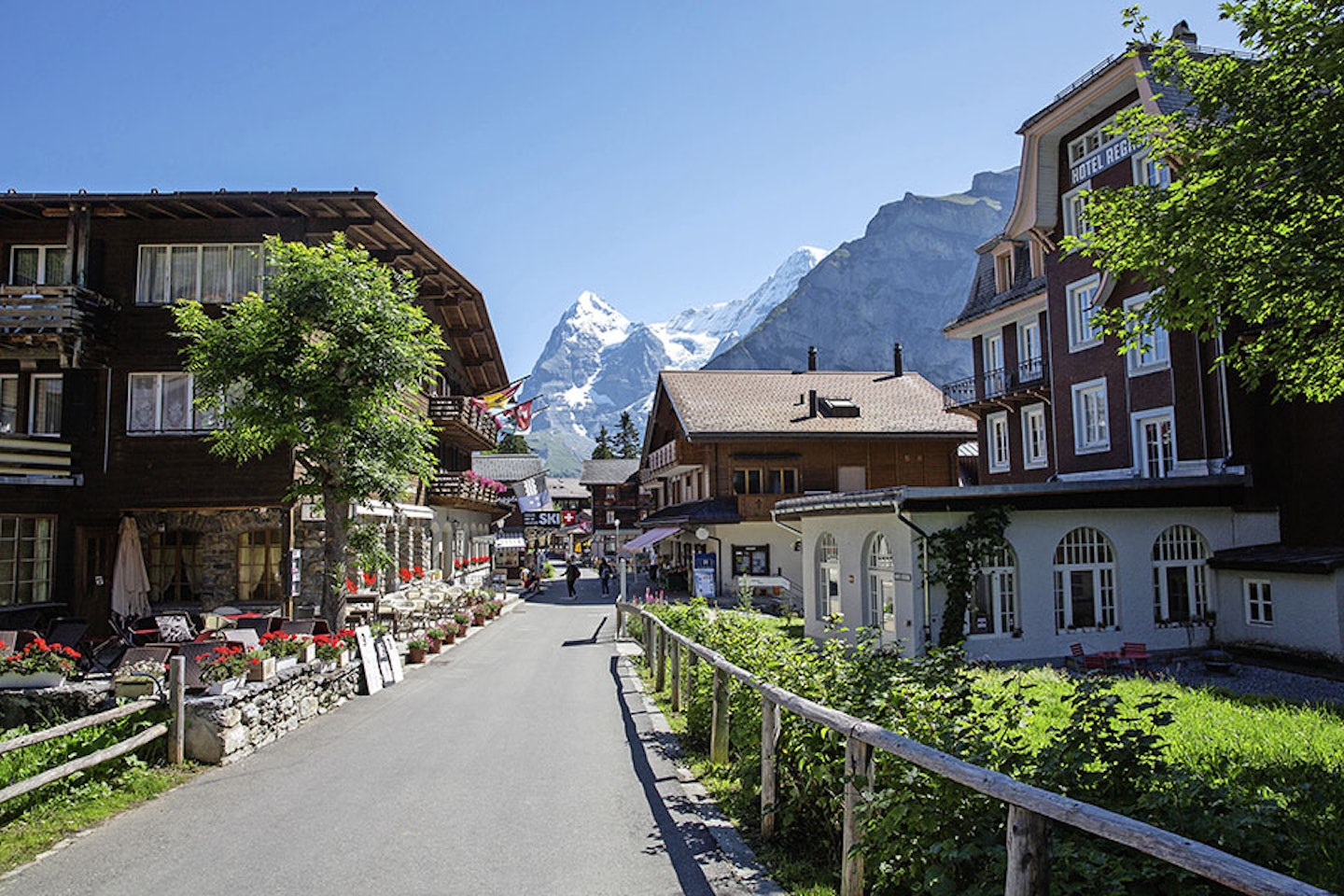
We passed endless wooden chalets and farms straight from the pages of a Heidi novel, with perfectly chopped firewood piled high against their walls and cocksure goats grazing outside. The natural amphitheatres of the valleys echoed with the sound of distant waterfalls and the endless chiming of cowbells, which grew louder with every upward footstep.
And then there were the mountains themselves. Everywhere we looked there was a more jagged pinnacle, a more exposed ridgeline, a higher wall, a bigger glacier. And still the well-marked hiking trails snuck between them, easy to follow and designed for walkers of all abilities to follow.
Our first full day was an out-and-back walk to the Rostockhütte, nestled in a deep green gorge beneath the 2970m summit of the Schilthorn, immortalised by its appearance in the 1969 James Bond movie On Her Majesty’s Secret Service. We crossed the Wasenegg ridge on the way, which doubles up as the official dividing line between the Alps proper and what’s known locally as the ‘Pre Alps’. As we traversed the ridge’s green backbone we took pleasure in knowing we had one foot inside Europe’s most celebrated mountain range, and the other in the equally stunning foothills of northern Switzerland.

The local weather app told us we’d be treated to a short blast of rain at 1.35pm and, just like the Swiss trains, it arrived with impressive efficiency. I scolded myself for not following the piece of local advice I’d been given over my bowl of bircher muesli at breakfast: “Clear your plate when you eat, and the weather will be great.” We swiftly corrected that at lunchtime by ducking into the hut, swapping our wet boots for a pair of complementary crocs, then polishing off bowls of meaty soup and mugs of vanilla milkshake. All the while the triple-threat of the Eiger, Mönch and Jungfrau loomed large to the east.
The following days tumbled past in a blur of mountain panoramas, wooden-clad restaurants, big plates of excellent (and expensive) local food, and the kind of walking you can scarcely believe exists just a short plane journey from the UK. We packed in a visit to an underground network of waterfalls so pumped with glacial meltwater that both noseplugs and earplugs should be on the recommended kit list, then finished our trip with a shot of pure adrenaline on the via ferrata cableway that creeps along the cliffs from Mürren to the neighbouring village of Gimmelwald, finishing with the most dramatic wire bridge crossing I’ve seen since Indiana Jones and the Temple of Doom.
Then before we knew it, we were back at Zürich airport, sipping one last cold lager with heads spinning at the effortless excellence of our Alpine hiking adventure. Switzerland may be a land of overused clichés and stereotypes, but it’s also a land of mountain legends that mere mortals like us are free to walk among.
And if it’s good enough for Bond, it’s good enough for me.
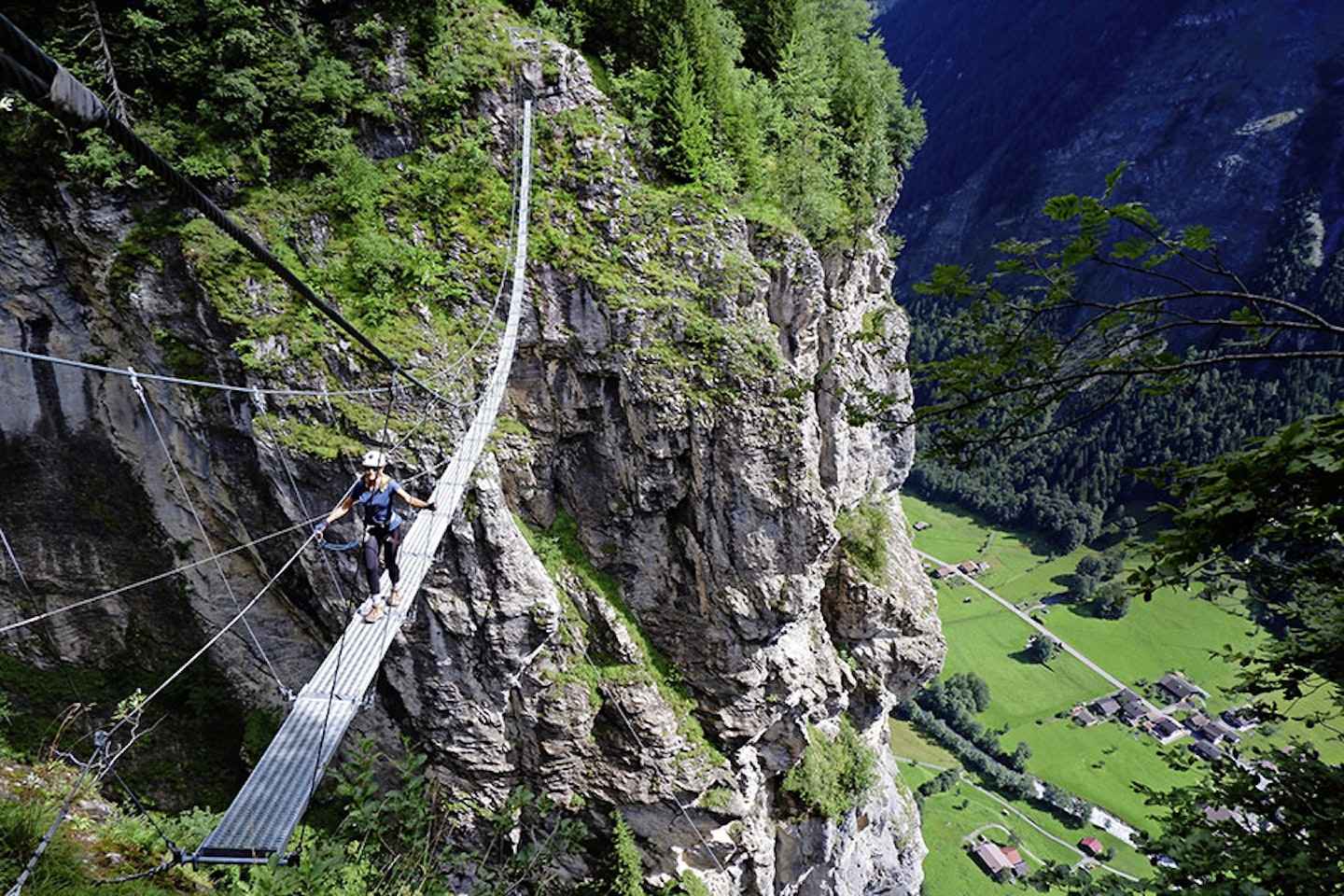
4 days in Alpine paradise
Day 1: Try to arrive at your hotel by mid-afternoon at the latest, so you have time to hike the Panorama Trail that loops above Mürren and delivers incredible views of the Eiger, Jungfrau and Mönch.
Day 2: Hike to Rostockhütte via the Wasenegg ridge, have lunch in the rustic mountain refuge (we recommend the goulash soup and vanilla milkshake), then follow the valley back towards Mürren.
Day 3: Hike to the top of the Schilthorn (2970m) via the village of Allmendhubel and a beautiful mountain lake, then try out the Thrill Walk that circles the summit on a steel and glass bridge with huge drops below.
Day 4: Book an early session on the recently installed Mürren via ferrata course, then travel to Zürich airport by train and fly home.
Local info: schilthorn.ch or muerren.swiss
Plan your trip: www.myswitzerland.com
Flights: www.swiss.com

Trail’s tips
Take plenty of cash: Switzerland is notoriously expensive and this region is no different. Expect to pay more than €20 for every meal – our record was €9 for a plate of chips – and take a decent amount of cash because some mountain refuges and shops don’t take card payments.
Meet the locals: The locals in the Schilthorn region are understandably very proud of where they live, and always happy to share tips and info on the best places to walk and eat.
**Do your research:**This is one of those places with way too much to see and do in one trip. Research the key summits you want to see and visit before your trip, plus look into booking things like the via ferrata, the Schilthorn cable car, or a trip to the Trummelbach waterfalls in advance.

